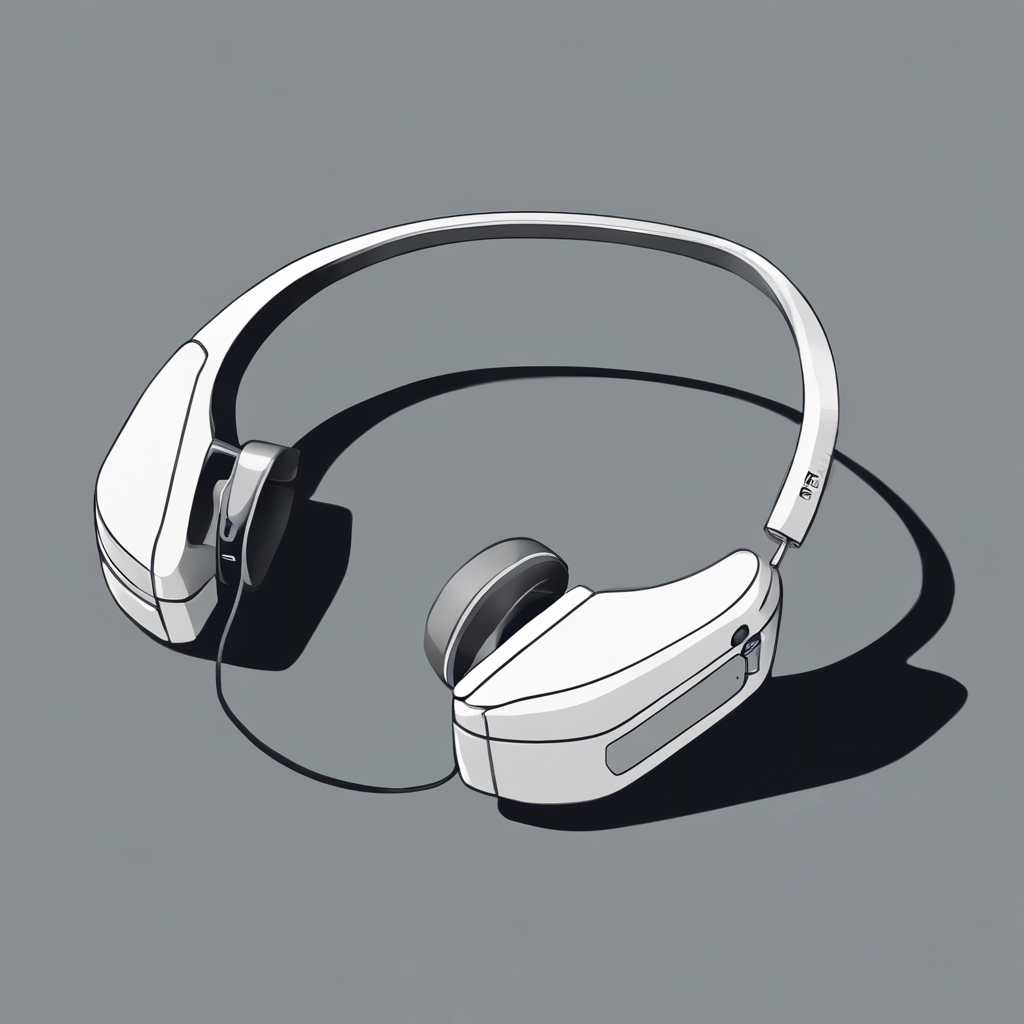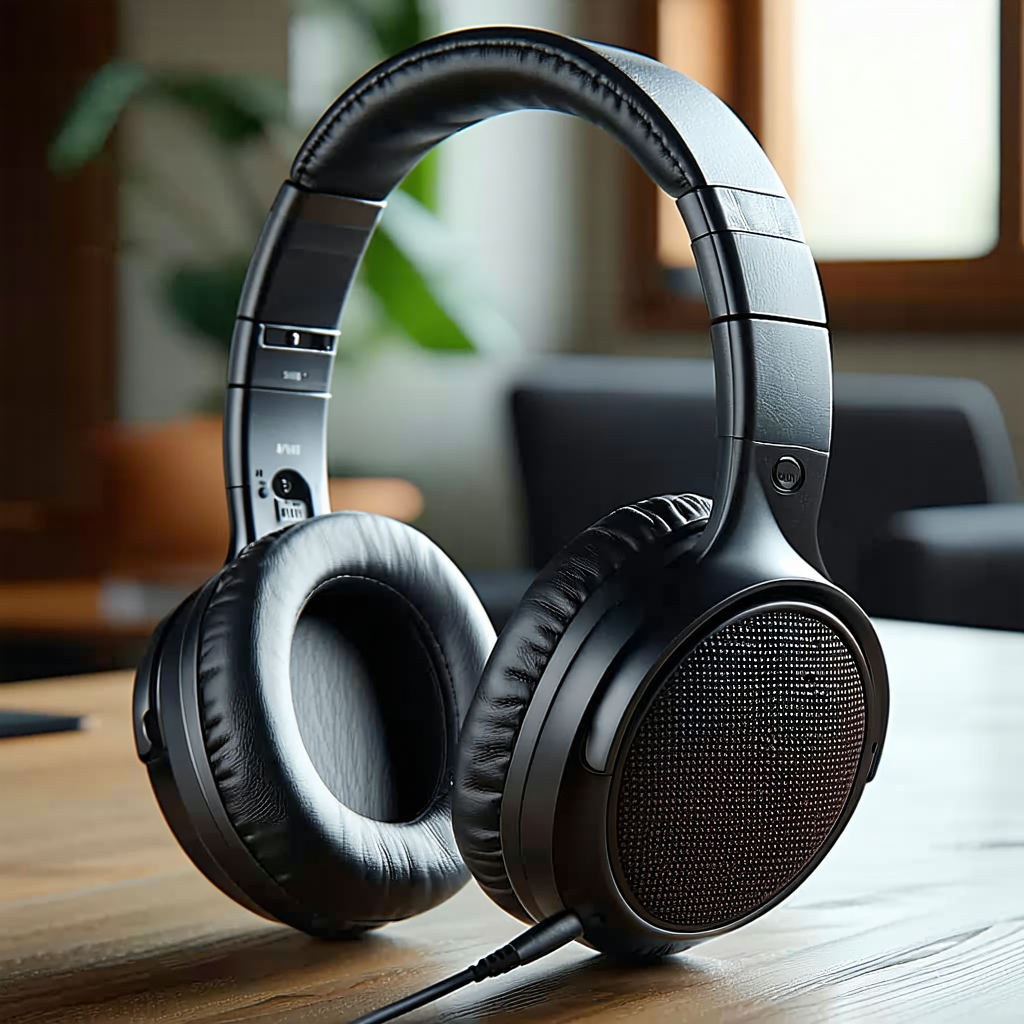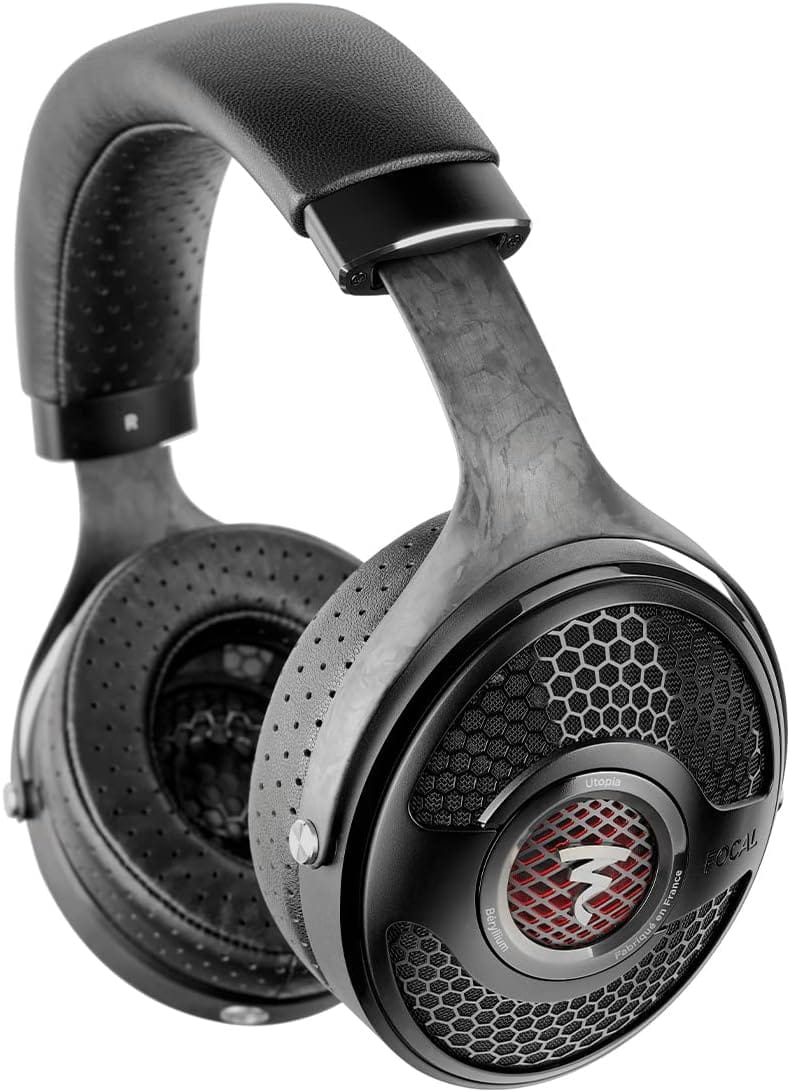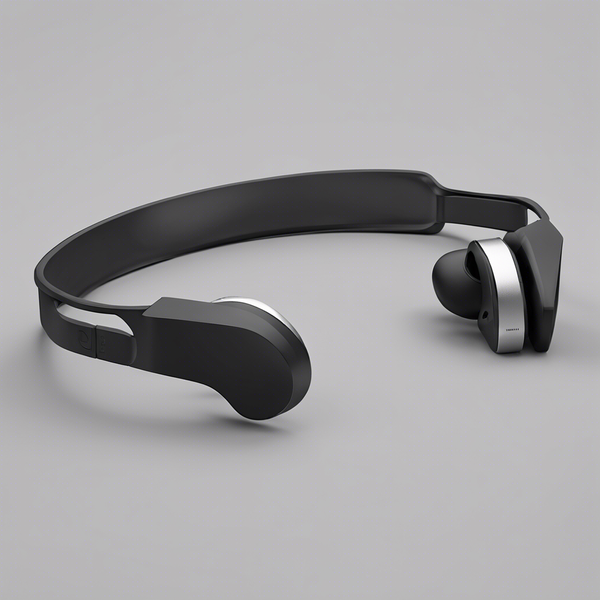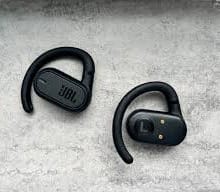The best open-back headphones change how we hear music. They offer top-notch sound quality.
This is more than just listening to music, which is why sound experts and musicians love them.
Key Takeaways
- Open-back headphones deliver superior sound clarity and detail
- Unique design allows natural airflow for enhanced audio performance
- Ideal for critical listening and professional audio work
- Provides a more spacious and realistic sound experience
- Perfect for audiophiles seeking authentic musical reproduction
Understanding the Basics of Open Back Design
Open-back over-ear headphones have holes in the ear cups for air to move freely. This makes the sound feel more natural and open, contributing to a unique sound signature.
These headphones work differently than closed ones. They let the sound move through the ear cups. This cuts down on sound reflections that can mess up the audio.
How Air Flow Affects Sound Quality
Airflow is key to how sound is heard. The open design lets sound waves escape. This stops pressure build-up and cuts down on sound distortion.
So, listeners get a wider, clearer sound that feels like live music. Additionally, the open-back design helps reduce unwanted noise by preventing sound reflections within the headphone enclosure.
The Role of Driver Technology
New driver technology has made open-back headphones better. They use advanced materials and precise engineering.
The design lets drivers work without being blocked. This means the sound is more accurate.
Some models even come with a second set of earpads, allowing users to customize the sound signature to their preference.
Sound Wave Behavior in Open Designs
Sound waves in open-back headphones act like they do in real life. They don't have sealed chambers. This makes the sound feel wider and more three-dimensional.
The Natural Sound Experience of Open Back Headphones
Audiophiles want sound that goes beyond the usual. Open-back headphones give them this with clear, natural sound.
Such headphones are known for their clear sound. They don't trap sound like closed ones do.
Also, these headphones are loved for catching small sound details. Their design stops sound from getting squished.
Comparing Sound Signatures: Open vs Closed Back
Exploring audio equipment shows the big difference between open and closed-back headphones. These differences are key for both serious listeners and casual ones.
Closed-back headphones have a sound that’s more in your face. They’re made to make bass and high notes stand out.
Open-back headphones give a sound that’s closer to real life. Air moves through the ear cups, making the sound more natural. They don’t color the sound like closed-back ones do, making music sound clearer, but they typically lack strong low bass response.
Bass Performance Analysis
Bass sounds different in closed and open-back headphones.
Closed ones make the bass sound bigger because they trap sound.
Open ones make the bass sound tighter and clearer, which is great for those who want precise sound.
For those seeking headphones with even more bass, models like the Sennheiser HD 490 PRO offer a bit more bass compared to others like the HD 800 S, while planar magnetic drivers in headphones such as the HiFiMan Arya provide better low-bass reproduction.
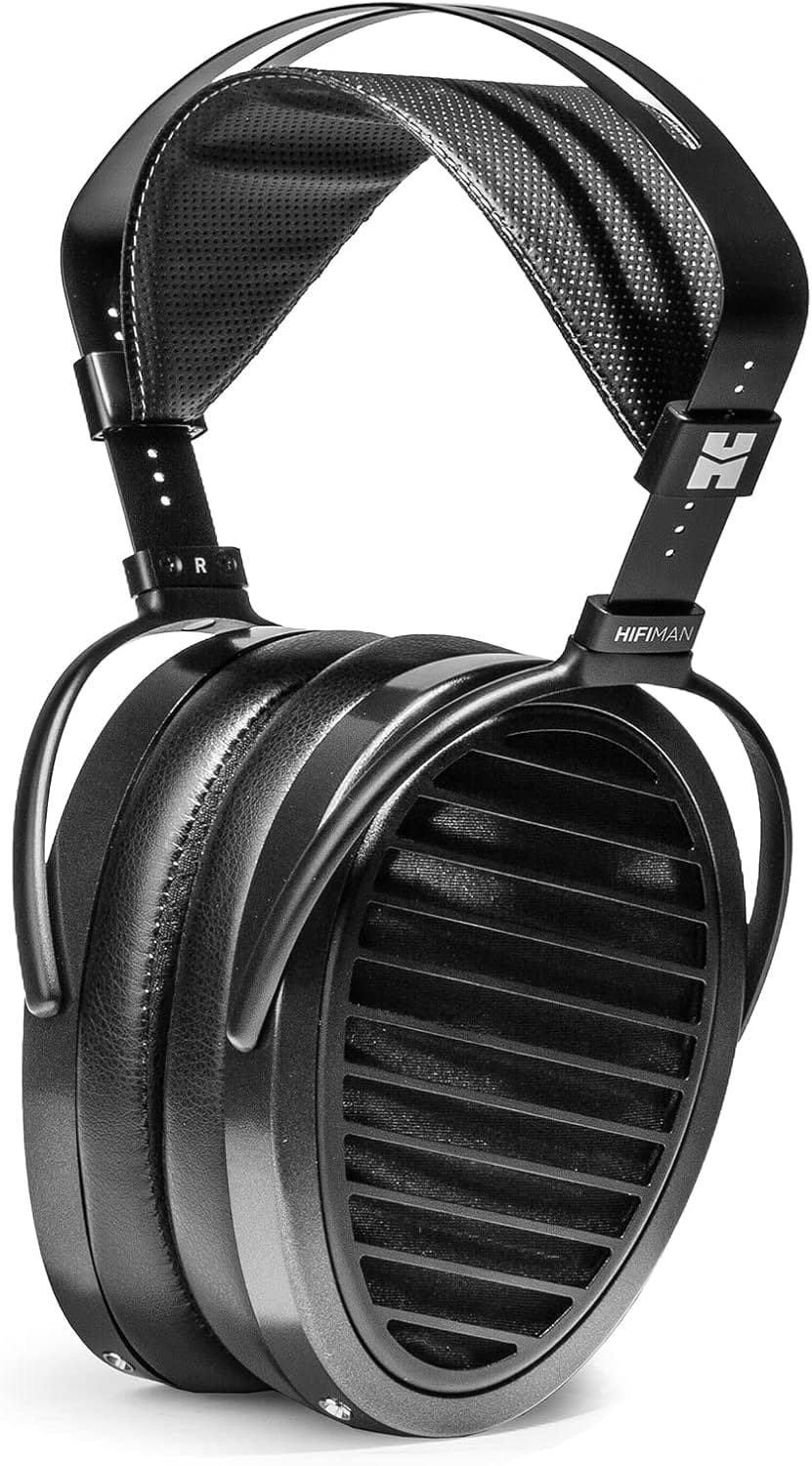
Amazon - HIFIMAN Arya Stealth Magnet Version Full-Size Over-Ear Planar Magnetic Headphone for Audiophiles - Studio
Midrange and Treble Characteristics
Open-back headphones are known for clear midrange and treble. They let sound out, but this makes the music sound bigger.
High-end models show how such headphones can make music sound amazing.
Why Audiophiles Choose Open-Back Headphones
Audiophile headphones are the best for sound, with open-back designs leading the way. The best open-back headphones are preferred by audiophiles for their high-quality sound and spacious soundstage.
The Sennheiser HD 600 is an example of such headphones that give amazing sound quality. It’s perfect for serious music fans.
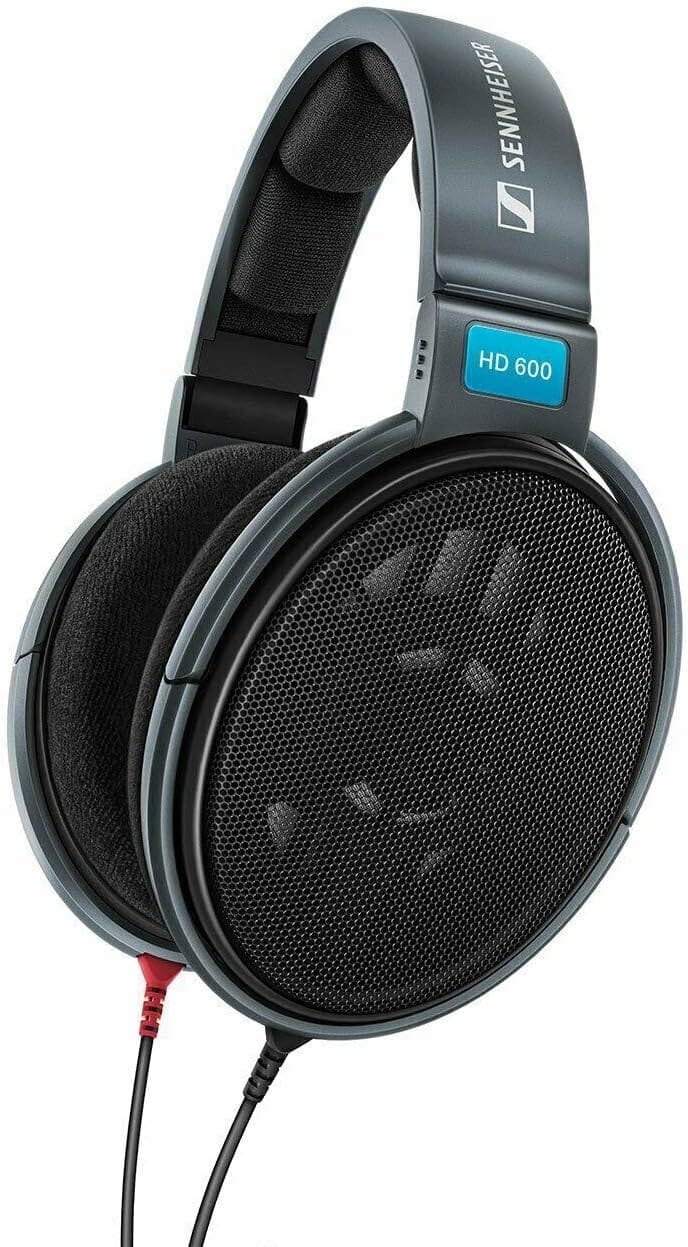
Amazon - Sennheiser Consumer Audio HD 600 - Audiophile Hi-Res Open Back Dynamic Headphone, Black
These headphones give a deep audio experience that closed-back ones can’t match.
Their design lets sound waves move freely. This creates a bigger soundstage that shows off music details.
These headphones are loved by audio pros and music fans for their clear sound. The open design helps separate instruments, making you feel like you’re at a live show.
You can hear small details that are missing from other headphones.
These headphones are also light, making them comfortable for long listening.
For musicians or music lovers, such headphones bring music closer to your heart.
The Science Behind Soundstage and Imaging
Open-back headphones give you an amazing sound experience. They create a wide soundstage that makes listening feel special.
We'll look into how these headphones make you feel like you're in a concert hall.
They use Head-Related Transfer Functions (HRTFs) to make it seem like it's coming from different places.
Creating a Concert Hall Experience
The magic of spatial audio tricks your brain. Open-back headphones make the sound seem like it's coming from all around.
They use sound reflections and depth cues to make you feel like you're at a live show.
Spatial Audio Performance
Musicians and sound engineers work hard to make recordings sound great. Open-back headphones pick up on small details.
This lets you hear where each sound is coming from, making music feel three-dimensional.
Room Acoustics Simulation
About 60% of people want a more real listening experience.
Open-back headphones do this by simulating how sound moves in real spaces. This makes listening feel like a professional monitoring session, enhancing the sound signature to provide a balanced audio experience.
Professional Applications and Studio Monitoring
Audio engineers and musicians use open-back studio monitoring headphones. They need precise sound for mixing and mastering. These headphones give a top-notch listening experience.
Brands like Beyerdynamic and Sennheiser make great studio monitoring headphones.
Such headphones are great for professional use. They offer a wide, natural soundstage. This lets audio engineers hear all the details during mixing and mastering.
Understanding Sound Leakage and Environmental Factors
Open-back headphones offer a special sound experience. But, they face challenges with sound leakage and outside noise.
We look into how headphone design and listening places are connected.
Impact of External Noise
Sound leakage is a big deal for these types of headphones. They let sound escape, unlike noise-cancelling ones. This means outside noise can get in, making them not great for loud places.
Ideal Listening Environments
The quietest places are best for open-back headphones. Think home studios, personal rooms, or calm offices. Here, you can enjoy the sound without outside noise or leakage bothering you.
Managing Sound Isolation
Open-back headphones don’t block sound well. But, that’s on purpose. It lets air move, making the sound feel wider and more natural.
However, this design can let in unwanted noise, which might be a drawback in noisy environments.
Comfort and Fatigue
Open-back headphones are often preferred by audiophiles not only for their clear and expressive sound but also for their comfort and reduced fatigue.
The airflow outwards as well as into the ears makes them less fatiguing to listen to, especially during extended listening sessions.
This design allows for a more natural sound and reduces the pressure on the crown of the head, making it more comfortable to wear.
Additionally, the earpad material and clamp force of headphones can also affect their comfort level, with some headphones offering swappable ear pads for extra physical customizability.
Semi-Open Back Headphones: A Middle Ground
Semi-open-back headphones offer a compromise between open-back and closed-back headphones. They allow some air to pass through the ear cups, but not as much as open-back headphones.
This design provides some of the advantages of open-back headphones, such as a more natural sound and reduced fatigue, while also offering some of the benefits of closed-back headphones, such as better isolation and reduced sound leakage.
Semi-open-back headphones are suitable for those who want a more immersive soundstage but also need to block out some background noise.
However, they may not be the best choice for everyday use, public use, or recording music in a studio, as they can still leak sound and let noise in.
Top Features of Premium Open-Back Headphones
Premium headphones are known for amazing technologies. Planar magnetic drivers are key, giving a sound that's precise and deep.
The Focal Utopia is the most popular. It shows how dynamic drivers make sound detailed.
High-end open-back headphones have great features such as :
- Advanced planar magnetic driver technology
- Premium materials for durability
- Exceptional sound stage performance
- Detachable high-quality cables
- Comfortable ear pad designs
Brands like Sennheiser HD 800S and HiFiMan Arya also show off new driver technologies.
Making the Right Choice for Your Listening Needs
Choosing the perfect open-back headphones is a big decision. Your personal taste in music is key to finding the right pair. We'll guide you through the world of headphones with the following tips.
Music Genres Matter
Each music genre needs its own sound. Fans of classical, jazz, and acoustic music will love open-back headphones due to the natural sound they offer.
But, if you like electronic or bass-heavy music, you might need headphones with special drivers, as open-back headphones typically lack strong low bass response.
Assess Your Listening Environment
Your listening spot affects how headphones sound.
Open-back headphones work best in quiet places like home studios. They're not good for loud places because they let sound out and don't block noise well.
Budget Considerations
Headphones come at all price points. The cost depends on the quality of the drivers and the brand. Look for headphones that match your budget, sound quality, and comfort.
Good headphones make listening to music special. They make every song feel like a personal concert.
Conclusion
Exploring open-back headphones takes us on a special audio journey. They offer sound quality that music lovers and audiophiles dream of. The design of these headphones, like the Beyerdynamic DT900 Pro, gives a natural and immersive sound.
Such headphones are great for critical listening. They have a wide soundstage and precise sound, unlike closed-back headphones. They're perfect for music production, home listening, and detailed audio analysis.
Before buying, think about what you need. Open-back headphones are amazing for sound quality. But, they might not be best in noisy places or on public transport. The right headphones depend on your listening needs and preferences.
These headphones are a top choice in audio technology. They bring sound to life with clarity and space. They're ideal for those who want the best listening experience.
FAQ
What is the point of open-back headphones?
The point of these headphones is to prioritize sound quality, natural audio reproduction, and comfort over isolation. They are designed for listeners in quiet environments who value audio fidelity and immersion. If you're an audiophile, producer, or gamer in a suitable setting, they are an excellent choice.
What's better, open or closed-back headphones?
There’s no definitive winner between open-back and closed-back headphones—they’re designed for different purposes. Choose open-back headphones for audio fidelity and a natural listening experience, and closed-back headphones for noise isolation and versatility in busy or public places. If possible, try both types to see which suits your needs better.
What makes open-back headphones different from closed-back headphones?
These headphones have ear cups with holes compared to closed-back ones. This lets air flow freely. They sound more natural and wide, unlike closed-back headphones.
What are the disadvantages of open-back headphones?
Open-back headphones are best for audiophiles, gamers, or professionals in controlled, quiet environments. Their disadvantages make them less ideal for commuters, travelers, or users frequently in noisy or shared spaces.
What types of music genres work best with open-back headphones?
They're best for music that needs detail, like classical and jazz. Their wide soundstage is perfect for nuanced music.
Do open-back headphones reduce ear fatigue?
Yes, open-back headphones generally reduce ear fatigue. Their natural sound reproduction, reduced ear pressure, breathability, and overall comfort make them a great choice for long listening sessions, particularly in quiet environments. However, users still need to account for other factors like volume levels and environmental noise to minimize fatigue completely.
Can I use open-back headphones for professional audio work?
Yes, pros love them. They're used for studio work because of their accurate sound and natural feel.

RELATED ARTICLES:
